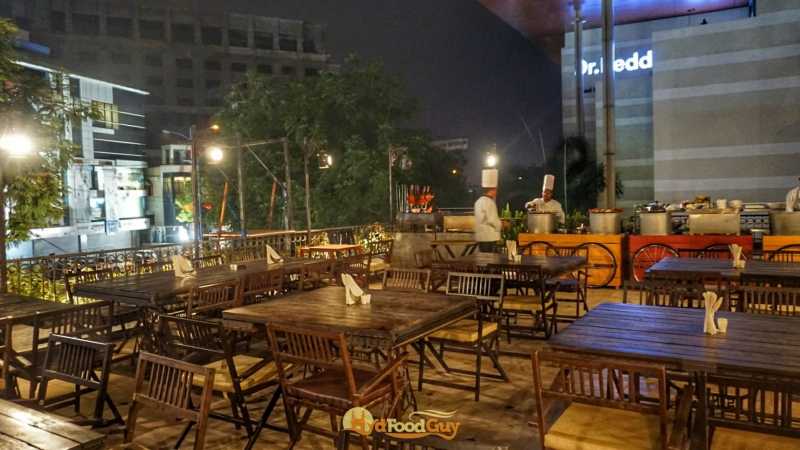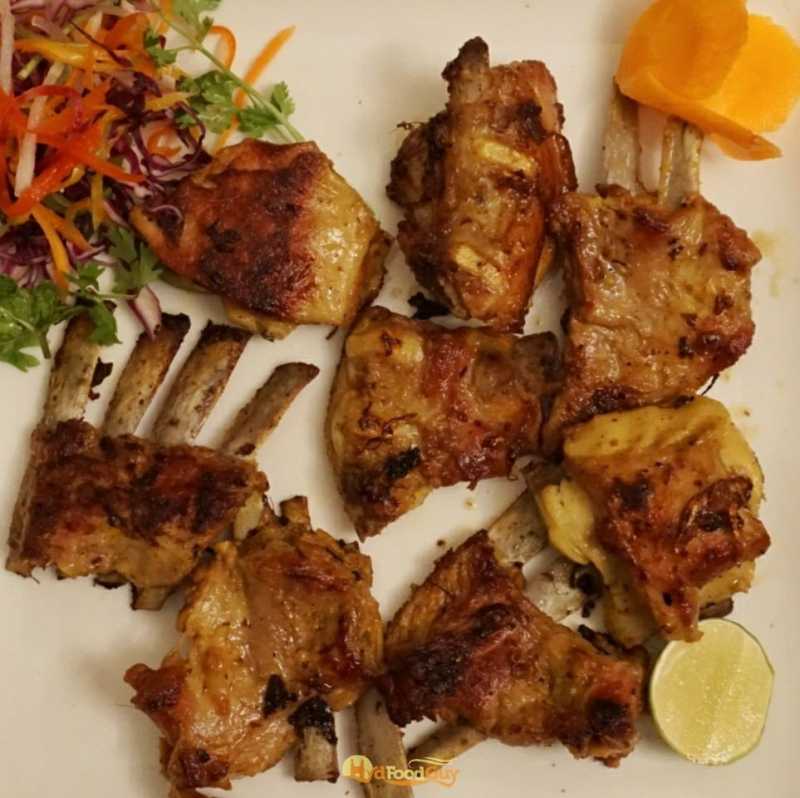Kebabs have an uniquely rich and storied history. While the mutton skewers or Sheekh Kebabs are perhaps the most widely recognisable form of kebabs, these delicacies come in all size and shapes. They might be spit roasted, flame grilled, or cooked on a tawa. In public imagery, Kebabs in the sub-continent are associated with the royal kitchens of affluent provinces like Awadh, Rampur, and Hyderabad. They were often invented by creative chefs eager to please the monarchs. While the likes of Galauti and Gilafi originated in Mughal kitchens, Indians were introduced to this the char-grilled delicacies much earlier. Ibn Battuta, a famous Morrocan traveller, mentioned the popularity of Kebabs among the royals in the fourteenth century. Over the years, Kebabs have become uniquely democratic. The best Kebabs are often found on streets, where they are enjoyed by the rich and the poor.
The latest venture by Chef Pradeep Khosla shines a light on the myriad of Kebabs popular in the Indian sub-continent. Mr. Khosla is the former Executive Chef of Taj Krishna Hyderabad and the current CEO and Corporate Chef of Food Krafters and Services (FKS). FKS debuted with its vibrant Ramzan food festival and then went on to launch Zaiqa-E-Hyderabad, an elegant diner dedicated to highlighting traditional Hyderabadi khana. Kebab Stories, which is located on the terrace of the Zaiqa-E-Hyderabad, features several Hyderabadi dishes as well as dishes from Northern India, Pakistan, and Afganistan.
Last month, I was invited for a tasting session at Kebab Stories. As I walked into the terrace, the evening breeze wafted the tantalising aroma of meats cooking on the grills and the coal pits that overlook the al fresco dining section.The dishes at Kebab Stories are categorised based on the mode of cooking. Murgh Kandahari and Mutton Shifta Sheek are from the Tandoor, Kukkad Til Tinka and Bhatti da Murgh are from the Sigree (coal pit), Rampuri Seena and Keema Gurda Kaleji are from the Tawa (pan fried), and Lahori Kachche Gosht ki Kadhai and Dal Frontier are from the Kadhai (thick bottomed Wok). Mr. Khosla learnt many of the recipes during his extensive travel to Pakistan and Afganistan. Keema Ghotala, a generously spiced minced lamb and scrambled combination, is popular on the streets of Mumbai. However, the recipe showcased at Kebab Stories is inspired by the street food from Burns Road in Karachi. The Kachche Gosht ki Kadai, lamb cooked in a tomato and onion gravy, draws its inspirations from Gawalmandi in Lahore. Bhatti da Murgh and Kukkad Til Tinka, both of which feature Chicken legs cooked in tandoor, are from the Punjab. The former uses a marinade of Amritsari spices, dried pomegranate seeds, and ajwain, while the latter is spiced with Kashmiri red chilli and crunchy sesame seeds. The Murgh Champ, a succulent piece of Chicken breast stuffed with dried fruits and cheese, draws inspiration from the opulent Awadhi gharana of cooking. I’ve have tried several variations of Paaya, but the Dahi Wale Paaya served in the main course was a revelation. The Paaya is left to simmer overnight, which allows the marrow and the flesh to slow-cook and get dissolved into the gravy. This lends the Paaya a distinctive glue-like texture and a fabulously rich flavour. Topped with yoghurt and browned onions and well complemented by Tandoori Roti, this is a dish that you shouldn’t miss. Chef Khosla explained that while the regular Paaya is better suited for breakfast, this dish is richer and heavier and is ideal for dinners.
The desserts section is comprised of Halwa Poori, Leb-E-Shireen, and Gulathi. Halwa Poori, a dish that’s popular in the Punjab province of Pakistan as well as Northern parts of India, is a gigantic, crispy fried poori topped with semolina halwa loaded with nuts. This dish is sold by the kilo and can be a meal on its own. On the other hand, Leb-E-Shireen, a popular dessert from Lahore featuring condensed milk with fresh fruit and jellies, is perfect if you’re craving for something light after the sumptuous Kebabs.
Kebab Stories is the result of a lifetime of experiences accumulated by Mr. Khosla. The flavours will be familiar to anyone from the Indian sub-continent. Yet, there is something distinctive about each of the dishes. From the rustic Gurda Kaleji to the royal Shifta Sheekh, Kebab Stories pulled off each of the dishes with aplomb. The portion sizes are generous and the pricing is reasonable. However, some of the specialities are offered by the dozen or by kilo and thus can only be ordered by large groups. Kebab Stories opens its doors at 7 PM.

















